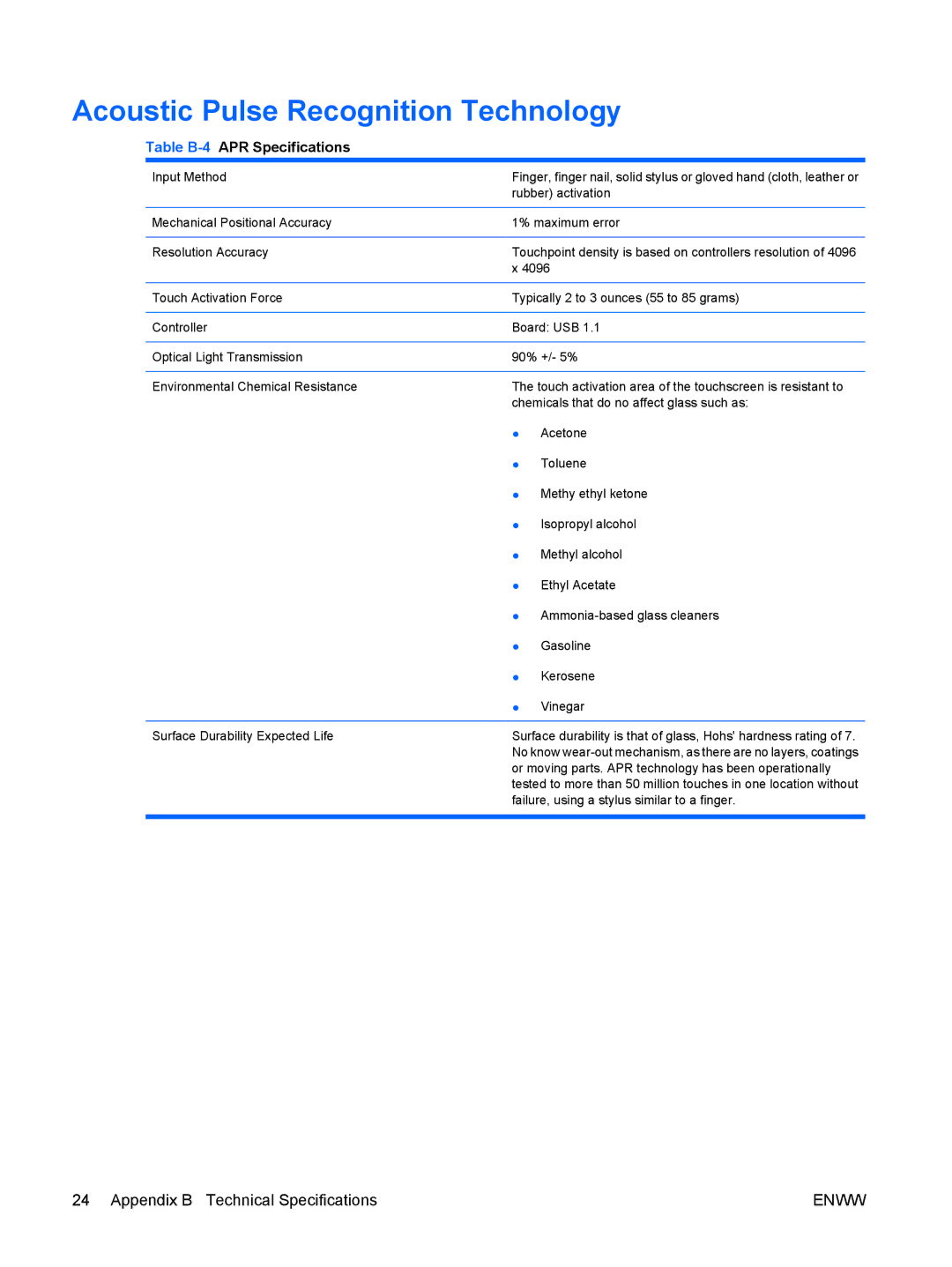
Acoustic Pulse Recognition Technology
Table B-4 APR Specifications
Input Method | Finger, finger nail, solid stylus or gloved hand (cloth, leather or | |
| rubber) activation | |
|
| |
Mechanical Positional Accuracy | 1% maximum error | |
|
| |
Resolution Accuracy | Touchpoint density is based on controllers resolution of 4096 | |
| x 4096 | |
|
| |
Touch Activation Force | Typically 2 to 3 ounces (55 to 85 grams) | |
|
| |
Controller | Board: USB 1.1 | |
|
| |
Optical Light Transmission | 90% +/- 5% | |
|
| |
Environmental Chemical Resistance | The touch activation area of the touchscreen is resistant to | |
| chemicals that do no affect glass such as: | |
| ● | Acetone |
| ● | Toluene |
| ● | Methy ethyl ketone |
| ● | Isopropyl alcohol |
| ● | Methyl alcohol |
| ● | Ethyl Acetate |
| ● | |
| ● | Gasoline |
| ● | Kerosene |
| ● | Vinegar |
|
| |
Surface Durability Expected Life | Surface durability is that of glass, Hohs' hardness rating of 7. | |
| No know | |
or moving parts. APR technology has been operationally tested to more than 50 million touches in one location without failure, using a stylus similar to a finger.
24 Appendix B Technical Specifications | ENWW |
